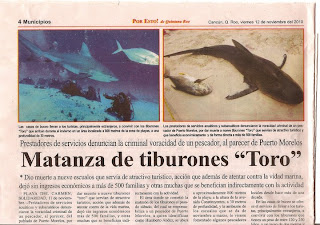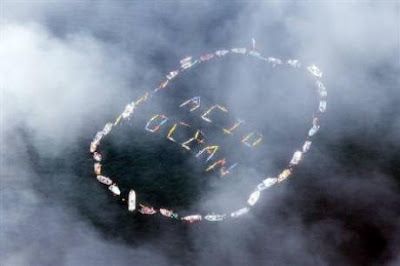STOCKHOLM, Sweden -- Electrolux has unveiled five vacuum cleaners made from plastic waste collected from the world's oceans. The launch of the unique vacuums marks the next chapter and continuation of the "Vac from the Sea" initiative that aims to raise awareness around ocean plastic waste and inspire consumers and industry to more recycling.
"I would like to thank everyone that has brought attention to the issue and express my deepest gratitude to our partners, for providing us with knowledge and working with us in gathering plastic from the world's oceans," said Hans Stråberg, CEO and president, Electrolux.
"Our intention is to bring awareness to the situation and the need for better plastic karma. So far, over 60 million people have been reached and we are continuing the initiative following the great response," added Cecilia Nord, vice-president of floor care sustainability and environmental Affairs, Electrolux.
Each of the vacuum cleaner demos represents the ocean from which the plastic originates. The vacuums embody the plastic paradox: oceans are full of plastic waste, yet on land there is a shortage of recycled plastic for producing sustainable vacs. Today, Electrolux offers Green Range vacuum cleaners with up to 70% post consumer recycled plastic. The ambition is to reach 100%.
Electrolux is looking into auctioning off one vacuum, with the revenues going back into research. At the moment, the quality and the logistics needed for cleaning and sorting ocean plastic makes it difficult to use in mass production.
" Right now, only post consumer plastic on land meets our commercial safety and quality standards. However, as part of our commitment to researching new materials, we should explore how the ocean plastic might be used in the future, and one such step is to make a single concept vac that we can auction out," says Cecilia Nord.
More information on the 'Vacuum of the Sea" can be found at www.electrolux.com/vacfromthesea
The Vacs from the SeaAll the models have been built using the same core structure (chassis, engine, and bag compartment) as the UltraOne Green-model. All are fully functional.
Vac from the Sea – Pacific Edition
Collection site: Hawaii, USA Method: Beach cleanup Partner: B.E.A.C.H.
The Pacific Edition concept vacuum cleaner is made up of the drifting plastic grain that fills our oceans. The plastic has been bleached by the sun and corroded by salt water. This plastic grain is dangerous because it can easily be swallowed by fish and continues through the whole food chain to both animals and humans.
Red/dark objects often attract birds, fish and other sea animals since they believe the plastic is food. The plastic that is left in the sea and that washes up on beaches is usually blue, green or white. Some of the found objects were covered with barnacles and annelid worms. Other objects had traces of bite marks from sharks.
The plastic gravel has been poured onto fiberglass moulds and covers the entire hood and the hub caps. By studying how small these plastic particles are one understands how hard it is to remove the plastic once it is in the oceans. It is a wake-up call and a reminder of one of the most important environmental issues today.
Vac from the Sea – North Sea Edition
Collection site: Skagerrak, Sweden Method: Coastal cleanup Partner: Sotenäs Municipality
The plastic that was collected on the Bohuslän beaches in western Sweden consists largely of various rinse aid and detergent bottles, cans, plastic buckets, and all kinds of plastic packaging. The plastic has not been bleached in the same way as in the great oceans. It is still loud and strong in color. A lot of the found plastic was also drenched in spill oil.
The plastic was washed clean and cut in pieces. The bright colored pieces were then punched into circular tokens. The tokens were then applied onto a fiberglass weave, molded after the shape of the vacuum cleaner.
Vac from the Sea – Mediterranean Edition
Collection site: St Cyr-sur-Mer, France Method: Beach cleanup Partner: Surfrider Foundation
Most of the plastic collection from St Cyr-sur-Mer is composed of plastic objects thrown or washed out to sea from the great beaches. PET-bottles, food containers, beverage cans and beach toys are some such objects. Tourism litters the Mediterranean Sea with tons of plastic on a daily basis. Most of it remains in the sea forever because of slow plastic degradation.
The plastics were cut into heart shaped pieces and then attached to a thin shell of industrially recycled plastic. In order to form the plastic close to the vacuum cleaner the designers used hot air.
Vac from the Sea – Indian Ocean Edition
Collection site: Phi Phi Islands, Thailand Method: Coral reef diving Partner: Blue View Divers
The plastic from Thailand is collected from beaches, corals and the underwater seabed. It consists largely of fishing gear such as nets and plastic ropes. The divers had to cut the nets and plastic bags loose from the staghorn coral reef. There were also large chunks of styrofoam drifting in the waters and large amounts of household garbage, plastic bags, buckets, drink bottles and detergent containers.
The collected plastics were split in a shredder into thin strips. The white and colored plastic strips were then mounted in a pattern that covers the entire top and the hub caps on the vacuum cleaner.
Vac from the Sea – Baltic Edition
Collection site: Sandhamn, Sweden. Gdansk, Poland. Ragaciems, Klapkalnciems, Latvia Method: Coastal cleanups with locals. Partners: Islanders, Sandhamn, Sweden. The Hel Marine Station, Poland. Pedas, Latvia.
For the Baltic Sea Edition concept vacuum cleaner, plastic was collected from three different sites in Poland, Sweden and Latvia. In Sweden, special Vac from the Sea-envelopes were distributed to people in the small harbor of Sandhamn in the Stockholm archipelago. The envelopes were filled with litter and sent to Electrolux.
In Poland, the collection was organized in cooperation with the Hel Marine Station, a field station part of the Institute of Oceanography at the University of Gdańsk. Beach cleaning is part of its educational program and a group of school children from a Słupsk elementary school helped to collect plastic on the Hel peninsula beaches.
In Latvia, there was an organized beach cleanup at Ragaciems, Klapkalnciems, about 40 kilometers west of Riga, with NGO Pedas.
The plastic litter from the three countries covers the vacuum cleaner. Different objects range from ice cream packaging to plastic bottles to flipflops to numerous bottle caps and beach toys. The found objects were mounted on a hood made of industrially recycled plastic and then heated up with hot air – to follow the sleek contour of the Ultra One machine.
Source:
http://www.underwatertimes.com/news.php?article_id=02108713465
About Oceanic DefenseWe are an international non-profit organization with members in over 60 countries, spanning 6 continents with 1 mission; healthy aquatic ecosystems free from human abuse and neglect. Oceanic Defense teaches people to protect our oceans by acting responsibly as consumers and by making smart decisions in our daily lives. Whether we are buying groceries, commuting to work, planning a vacation or advocating within our own communities; each action we take or decision we make either helps or hurts our oceans. We empower people to be part of the solution rather than part of the problem and work together to protect our blue planet.
Join us on Facebook:www.facebook.com/OceanicDefenseVisit our official website:www.oceanicdefense.orgFollow us on Twitter:www.twitter.com/OceanicDefense























